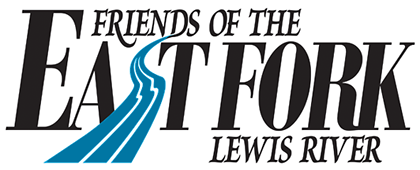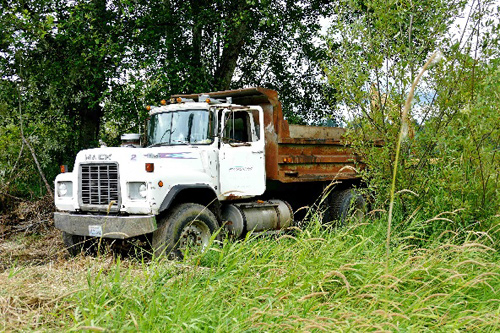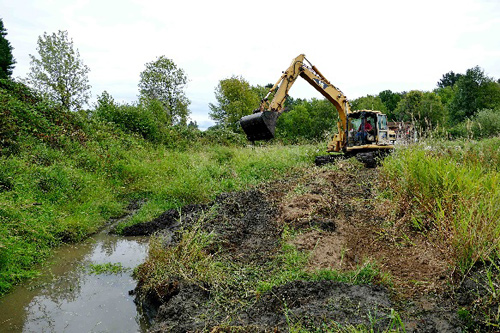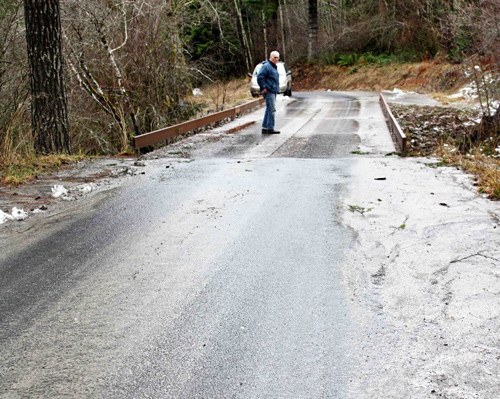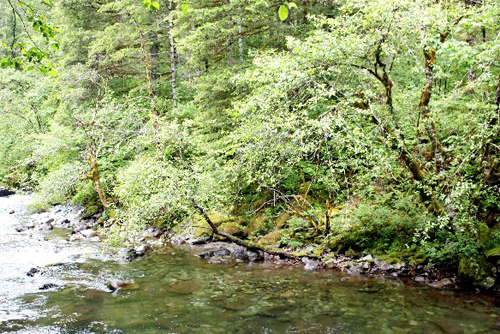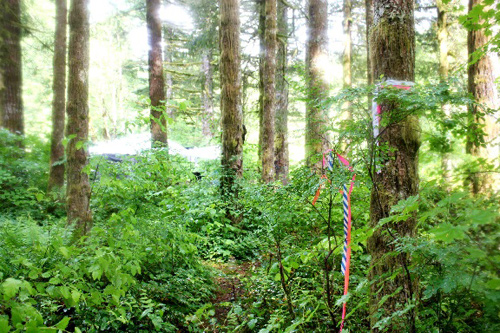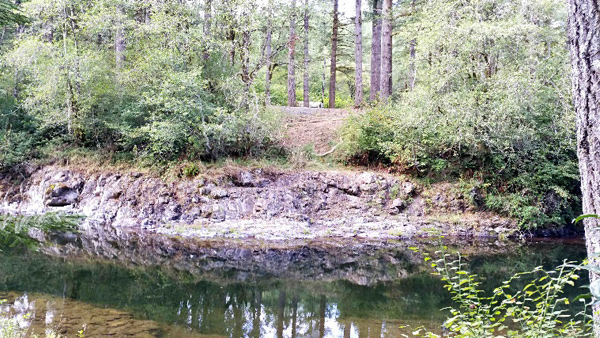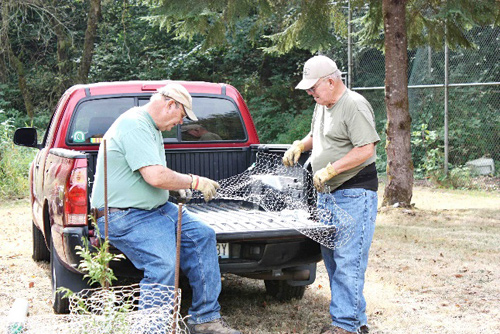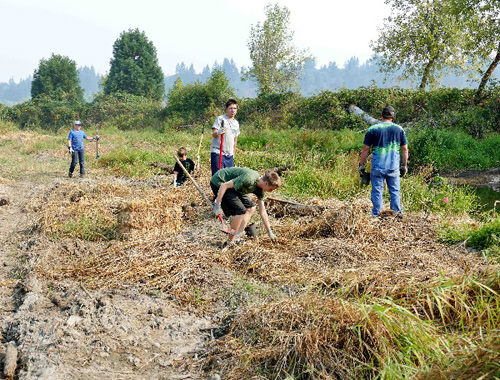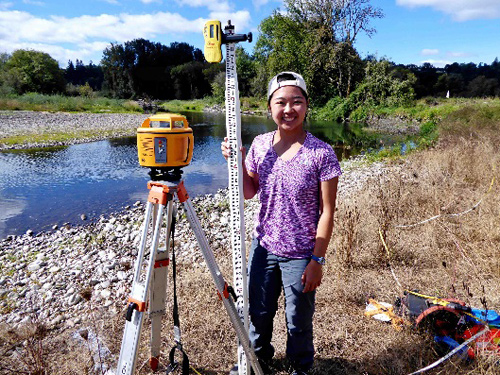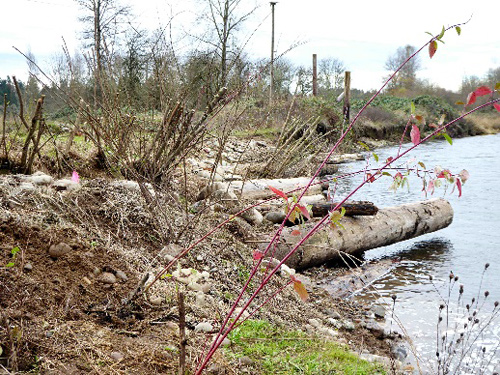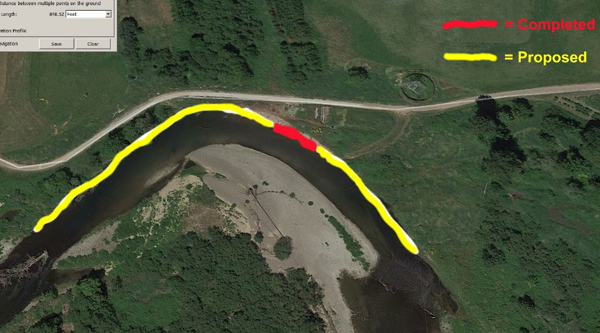UPDATE ON WHAT FRIENDS OF THE EAST FORK (FOEF) ACCOMPLISHED UNDER IT’S VARIOUS RIVER & LAND STEWARDSHIP PROGRAMS IN 2016
1-25-2017
Friends of the East Fork Lewis River achieved a wide range of significant accomplishments in 2016 thanks to activity support by members, membership donations, interaction with concerned families & persons living on or near the East Fork, donation of fieldwork time by people with professional skills, the generous support of a number of private companies, and of course collaboration with state & federal agencies such as the WA Dept. F&W, Dept. of Ecology, the WA DNR, Clark County Councilors & Staffs, and the Federal Agencies including NOAA-Fisheries, EPA, US Fish & Wildlife, and the Gifford Pinchot National Forest – US Forest Service Region-6.
Plus, a number of private individuals and families stepped forward to give us key support at critical times. Fish First, Sierra Club, Wild Fish Rescue & also the Salmon Creek Fly Fishers an affiliate of the Healing Waters Veterans National Group played an important role too.
SOME SPECIFIC RECENT ACCOMPLISHMENT EXAMPLES ARE THE FOLLOWING:
On the lower East Fork, re-excavated over 250 ft. of the lower section of the Swanson Chum Channel/Side-Channel to allow better access of salmon & steelhead fry as well as juveniles into the much cooler side-channel summer groundwater flow.
The deepened side-channel helps to counteract the high stream temperature conditions (sometimes even lethal), that occur in the river during summer minimum water flow levels in the lower East Fork. Stream water heating to lethal levels is primarily the result of stream bed (channel) conditions that have a high width of channel compared to a shallow depth of water stream bed condition. This is also coupled in the river channel with the loss of deep resting pools caused by extreme erosion/sedimentation rates that increased dramatically over the last 40 years. The Swanson family who are the local landowners, donated the use of & operated the excavator as well as a dump truck to move & properly store excavated material. A great help to the project was the donation of $500 by the Loo Wit Vancouver Chapter of the Sierra Club to pay for excavator and trucking fuel.
Using the Federal Clean Water Act and the Endangered Species Act as a means to insure pollution control compliance by activities involving storm sediment runoff from roads, mining use of nitrate based explosives that resulted in leaching into water sources, and pollution threat to tributary streams leading to the East Fork, a “Consent Decree” was reached between all parties with the help of a federal judge and our FOEF lawyers. A new road was also built and Clark County agreed to set up a staff position to better monitor and enforce state and federal water quality laws and regulations compliance & enforcement. FOEF continues to monitor the area and others to see if there is adequate protection from potential pollution related to rock mining in the Yacolt Mountain area of the East Fork and if compliance and protection results are being achieved.
Through cooperation with and generosity of a nearby land owner, the prevention of development on a highly sensitive piece of East Fork river and bank land that provided critical T&E listed steelhead spawning & pool habitat was saved from development. Development would have potentially disturbed an old identified toxic chemicals dump and degraded listed steelhead and salmon fisheries key habitat. A private family, with the skillful negotiation support from one of our FOEF volunteer lawyers, used $ 80,000 of their own money to purchase the land and protect it in perpetuity.
We continually do monitoring of Clark County Lot Development Project Applications Weekly Reports in order to engage County, State, and Federal Agencies & Staffs, when investigation indicates that the proposed site conditions and related actions pose a potential violation of Storm-water requirements, Federal Clean Water Act, or Federal Threatened & Endangered Species Act or other required permitting processes. And in particular, we investigate if the development moved forward to approval or if effective mitigation is not possible. We have found two such potential cases along the upper East Fork recently and have engaged Clark County Development Dept. on discussions of specific issues of concern. Our monitoring program of stream conditions, citizen involvement, and also our use of “GoPro” cameras to check underwater fish presence & restoration project success is another important part of our monitoring program.
Collaborated with the Salmon Creek Fly Fishers Veterans Group to do tree & shrub maintenance as well as stream bank enhancement through new shrub & Tree planting for stream temperature reduction & stream bank habitat cover along lower Manly Road Creek located off Septan Drive at the stream section opposite Clark Counties Grace Lodge facility. Included in this work, is also along the nearby salmon/steelhead spawning riffles area & upper salmon fry rearing pond.
Collaborated with the Salmon Creek Fly Fishers Veterans Group at the outlet of Manly Road Creek, to install about 210 lineal feet of spruce Christmas trees (with no needles) to function as much needed cover and predator protection of salmon & steelhead fry and juveniles. Several trips & man hours were required by work groups of 7 to 13 people. Also, we were joined by a contingency of Boy Scouts who were very talented and worked hard at getting the job done.
At the Swanson Side-channel, as follow up to the channel excavation improvements, we later installed additional bank revegetation through collaboration with the Salmon Creek Fly Fishers Veterans Group, along with very experienced assistance from the Boy Scouts. This work resulted in planting over 400 ft. of shrubs at the Swanson Side-Channel in order to help provide shade and habitat along the stream bank.
Through additional collaboration later in the summer with the Salmon Creek Fly Fishers Veterans Group, we installed about 200 ft. more of used Christmas Trees in the Swanson Side-Channel. This will provides extensive cover and predator protection to fry & juvenile salmon as well as steelhead who use the channel to escape the high summer stream temperatures (760 F degrees or more) in the lower East Fork.
Assisted the Swanson family in the design and installation of the 75 ft. long PHASE-1 of the 700 ft. plus, Swanson-Powerline Bend streambank & salmon holding pool restoration as well as gathering key hydrologic data for PHASE-2. Plantings of both trees & shrubs for PHASE-1 were donated by the Natural Recovery Nursery. A key factor in the success of PHASE-1 was the timely support of the WA Dept. of Fish & Wildlife and the donation and delivery of about 30 salvaged reservoir pool logs, over 25 ft. long, by Pacific Power Company. We were also able to obtain donations of technical/professional support from a geologist, hydrologist, fluvial-geomorphologist, river engineer, and a fisheries biologist.
PHASE-2 is the remaining 625 ft. of channel with the severely degraded right side (north) stream bank needing restoration—see the “PHASE-1 & 2 Aerial Photo of the Powerline Bend Project” that follows.
PHASE 1 & 2 OF SWANSON POWERLINE BEND PROJECT – 2016 AERIAL PHOTO
In addition to on the ground stream & watershed work, Friends of the East Fork has also been very active in providing information & testimony to the Clark County Councilors at their weekly Tuesday Public Board Meetings as well as being part of various committees and support groups. This also involves informing area citizens and encouraging them to provide testimony and key information on what they have observed that may be of concern in the conservation management & improvement of watersheds and streams of the East Fork Lewis River.
NATIONAL AWARD
We are also pleased that one of our FOEF Board members (Richard Dyrland, a hydrologist) recently received the “Presidents National Award” from the American Fisheries Society for singular accomplishments and long-term contributions that advance aquatic resource conservation at the regional & local level, and for recognition of unique capacity to develop and implement projects and programs at the local, regional, and national levels. He has over 50 years of stream, watershed, and project/program/policy management & technical experience at all levels.
PROPOSED 2017 FUTURE PROJECT ACTIVITIES & PROGRAM IMPROVEMENTS
Provide more timely and useful conservation information and potential action needs to our FOEF members & interested individuals, as well those directly concerned about the wide range of values the watersheds of the East Fork provide.
Provide more opportunities for FOEF Members and supporters to volunteer in support of various projects and FOEF supported activities. Also provide more opportunities for use of drones & underwater with GoPro cameras to check stream conditions and monitor restoration project results.
Increase the level & quality of programs/projects & associated collaboration with other groups and individuals as well as governmental agencies. Examples, add more “Hobo” summer temperature continuous monitoring installations in the lower East Fork; and stream habitat treatment design in upper East Fork thru support of, and collaboration with US Forest Service.
Increase collaboration with the Swanson Family to complete “PHASE-2” of the Swanson-Powerline Bend stream reach on the lower East Fork.
Do maintenance on the 940 ft. of the Swanson-Airstrip Side-channel in collaboration with the Salmon Creek Fly-fishers and other groups as well as individual volunteers.
Construct another summer “cool-water” Side-channel at an already identified key site on the lower East Fork, using mostly volunteer work & equipment contributions.
Search out and apply for new grants to help support programs and finance certain parts (materials, special equipment rentals, license fees etc.) of these non-profit volunteer efforts.
Expand the number of Board Members to better meet the Non-profit Organization objectives of Friends of the East Fork Lewis River (FOEF).
Increase the level of direct interaction with FOEF members as well as the general public, and the number of items of interest and frequency of FOEF news and information updates provided each month on our website. And, continue to regularly interact with the US Forest Service; they are responsible for the management of the watersheds/lands in the upper East Fork L. R. What they do has an effect on what happens in the lower part of the East Fork.
Continue doing “Public & Government Awareness” trips to acquaint people of the social-economic values, physical/biological attributes and overall “health” of the East Fork that is so important in helping the people of Clark County prosper and live a life of quality.
Coordinated by,
Richard Dyrland, Board of Directors
– Friends of the East Fork Lewis River, a 501c3 Organization
